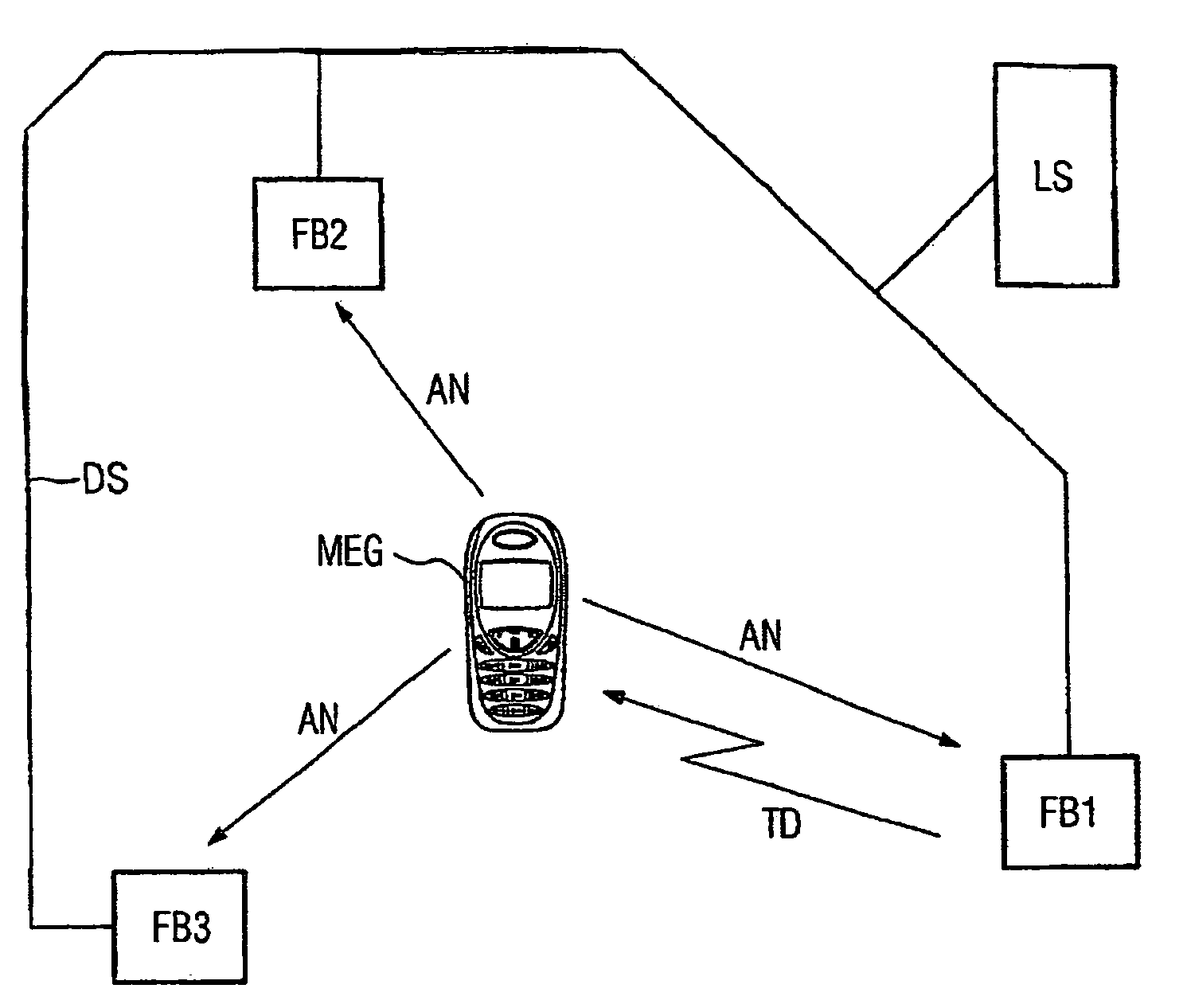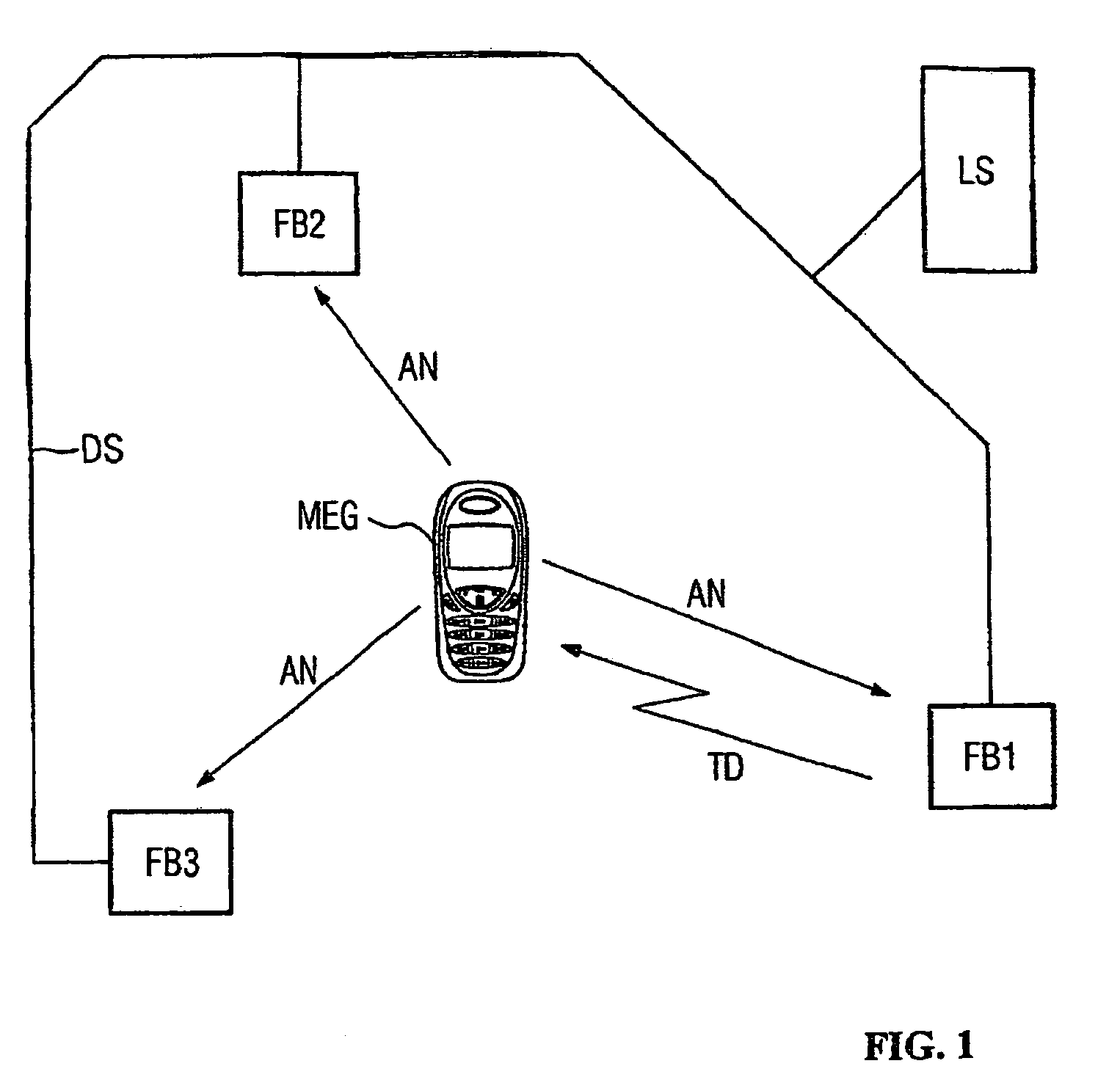Method and arrangement for locating a mobile terminal in a multicell radio arrangement
a multi-cell radio and mobile terminal technology, applied in the direction of electrical equipment, wireless communication, etc., can solve the problems of increasing the energy consumption of the mobile terminal, reducing the data throughput of the radio arrangement, and associated locating of the mobile terminal
- Summary
- Abstract
- Description
- Claims
- Application Information
AI Technical Summary
Benefits of technology
Problems solved by technology
Method used
Image
Examples
Embodiment Construction
The FIGURE shows a WLAN network to the IEEE Standard 802.11 as a multicell radio arrangement. In this network, the radio base stations FB1, FB2, FB3 (so-called access points) and a central device LS (location server) are connected to one another via a data network DS (distribution system), a local area network based on the Internet Protocol. The FIGURE also shows a mobile terminal MEG, for example a so-called PDA (personal digital assistant), with WLAN transmitting / receiving device.
The radio base stations FB1, FB2, FB3 are designed such that they can be instructed by the central server LS to signal to the central server LS the received field strength with which a mobile terminal MEG is received. In addition, the radio base stations FB1, FB2, FB3 may be instructed by the central server LS to temporarily change to an undefined radio channel of the WLAN standard being used.
It is, of course, also possible to use a different multicell radio arrangement with associated mobile terminals ra...
PUM
 Login to View More
Login to View More Abstract
Description
Claims
Application Information
 Login to View More
Login to View More - R&D
- Intellectual Property
- Life Sciences
- Materials
- Tech Scout
- Unparalleled Data Quality
- Higher Quality Content
- 60% Fewer Hallucinations
Browse by: Latest US Patents, China's latest patents, Technical Efficacy Thesaurus, Application Domain, Technology Topic, Popular Technical Reports.
© 2025 PatSnap. All rights reserved.Legal|Privacy policy|Modern Slavery Act Transparency Statement|Sitemap|About US| Contact US: help@patsnap.com


